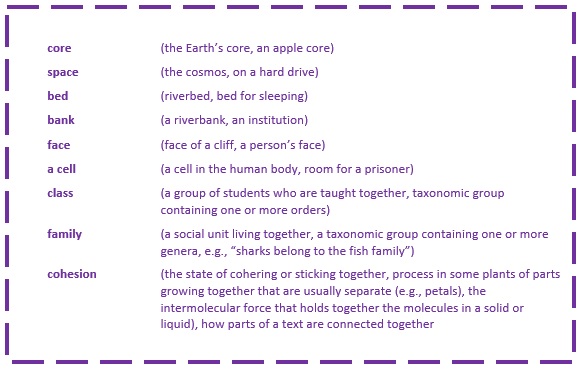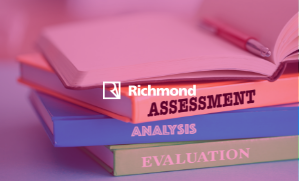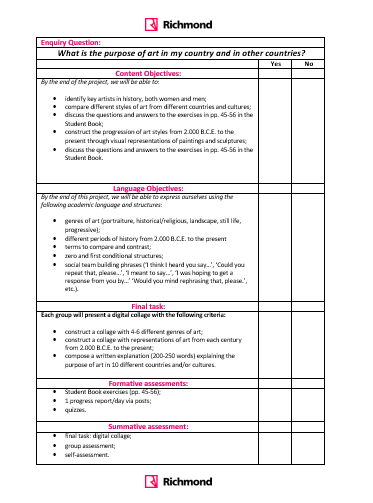Assessment is one of the main reasons teachers feel uncomfortable with the idea of dedicating time to project work in class. If you are one such teacher, don’t worry! Here, in the second of a three-part post about assessment when doing project work, we’ll answer the question: “How do I balance content and language in assessments?” So, without further ado …
Assessing content and language in bilingual programs
When we teach as part of a bilingual programme and foster project-based learning, the question of whether to, and in what measure, assess content and/or language is of vital importance. We know that we need to be able to show the results of our students’ progress in a way that all stakeholders are comfortable with, but it often feels overwhelming to get clarity on this issue.
And the issue becomes even more complicated if we define ourselves as specifically a content or a language teacher.
“Hang on. What does that have to do with anything?” you’re probably asking yourself.
Well, the way we see ourselves and the way we define our responsibilities in our lesson planning has a huge effect on how we assess our students. More importantly, it has a fundamental effect on the opportunities we give our students to learn more holistically.
See how you feel about the following statement:
Whether you are a language or a content teacher, the rubrics for your projects need to have equally developed content and language objectives.
Anticipating your incredulity, here are two possible responses:
“I’m a content teacher so why would I focus on language?” or “I’m a language teacher so why do I need to assess content?”
Excellent questions; so let’s dive deeper … When you were learning your first language, did your family distinguish between the time during which they would speak to you about the structure of that language and another time during which they would speak to you about content? In other words, when you were growing up, did you parents or carers indicate that between 08.00 and 09.00 you would list the verbs you knew about the playground and then from 09.00 to 10.00 you would talk to them about what you did in the playground?
Of course not. You learned both elements together. And if you got confused about expressing yourself, your elders probably gently corrected you. Otherwise, there was a fairly seamless bond between playground language and what you did in that playground (i.e., the content), right?
This same dynamic needs to be modelled in the classroom. In schools with a bilingual model that most resembles the CLIL approach, this is happening, And, if you aren’t teaching in a school that promotes this model of bilingualism, you can compensate by creating rubrics for projects that include detailed content and language objectives so that your students will learn more holistically.
Studies show that students learning a classroom language need five to ten years to develop language proficiency. To achieve this level, they need deliberate focus on vocabulary, terms, and register (academic language), because without this, they will not be able to gain the capacity to express themselves confidently when wanting to share information (content).
What does this mean to us? Let’s break it down …
Content teachers: To help your students express themselves more confidently and efficiently in your class, you’ll need to create moments of deliberate introduction to, and practice of, academic language, through the subject of your class. You can do that by delineating the language they’ll need in the language objectives of your rubric.
Language teacher: To help your students express themselves more confidently and efficiently in your class, you’ll need to choose a context they can speak about (please, not random, un-related sentences that simply serve as opportunities to repeat the targeted structure or vocabulary). You do this by delineating an interesting subject in the content objectives of the rubric.
Isn’t academic language simply the vocabulary that students need to learn in every unit?
That’s only part of the issue. When we are working on projects, we need to think very carefully about the language and language structure our students need in order to be able express the content. Often, the vocabulary we teach in one subject (in any language) has a very different meaning in another subject, and we tend to forget that many words and terms have context-specific meanings, which can confuse our students. You’d feel better with some concrete examples, right? Check these out:

So, let’s get back to the question of how to assess content and language in a project
If you’re a content teacher planning a project, you’ll need to think very specifically about the language your students will need to complete that project effectively. You can help your students improve:
a) through the rubric, where you should include detailed content objectives and language objectives;
b) by incorporating ways to make sure that your students understand the corresponding academic language fully (such as through Mini-Lessons).
If you are a language teacher planning a project, language structures will probably drive your decisions; however, the content is integral and necessary for students to be able to use these language structures. So:
a)include detailed language objectives and content objectives in the rubric;
b)plan ways to make sure to focus on the content as much as the language in your planning (such as through Mini-Lessons).
What does this look like in a rubric? Here’s an example:
Which teacher designed this rubric: the language or the content teacher? Can’t tell. Great! That means that this particular rubric is a good example of one which effectively develops both content and language objectives.
So, how do you balance between content and language in the overall mark for the project?
There are many factors involved in deciding this and the truth is that you’re going to need to use your intuition, to a large extent. You’ve put what you felt was essential for your students to learn in your rubric, but that doesn’t mean that you need to assess those elements in every assessment. You may have several formative assessment activities that focus on language, so that the summative assessment you carry out will only include content. Or viceversa.
And remember, you can always negotiate with your students with regard to the percentage of the overall mark these assessments will count for. Which brings us to a very important point: The key element in any assessment is that you are clear with your students about what they are going to be assessed on from the beginning of a project.
Part of the power of project-based learning work is that students feel more invested in their own individual and group learning journey, as teammates, whose voice is listened to. It follows that if they are not clear on what is going to be assessed at any given time, we are essentially take away their agency and revert back to the teacher-centred model: the exact opposite of what we intended.
Examples:
- Please write a 500 to 600-word summary about the differences between the three periods in the Middle Ages. You will be assessed on the clarity of these periods and the use of Past Simple.
- In the quiz on Tuesday, you will be assessed on your understanding of the uses of the Periodic Table. Correct spelling of the elements will also be included in the assessment.
- Please write five First Conditional sentences about the first chapter of the book you are using as the basis for your project. Standard use of the First Conditional and accurate plot points will be assessed.
In short, the clearer we are about content and language objectives in the rubric, the clearer we will be about what we want our students to learn and the clearer we will be on what aspects of content and language we are going to assess.
Subsequently, we can decide on which aspect of a rubric to focus on and when and what percentage of the overall mark that aspect will have towards the overall mark for a project.
Want to know more about Assessments for Projects? Fantastic! Look out for Part 3 of this post: To give, or not to give exams? Part 3: Formative Assessment.










